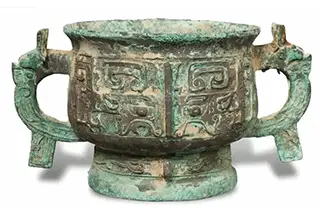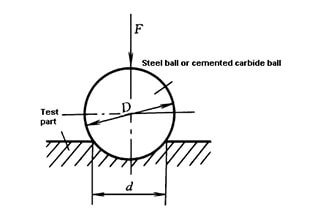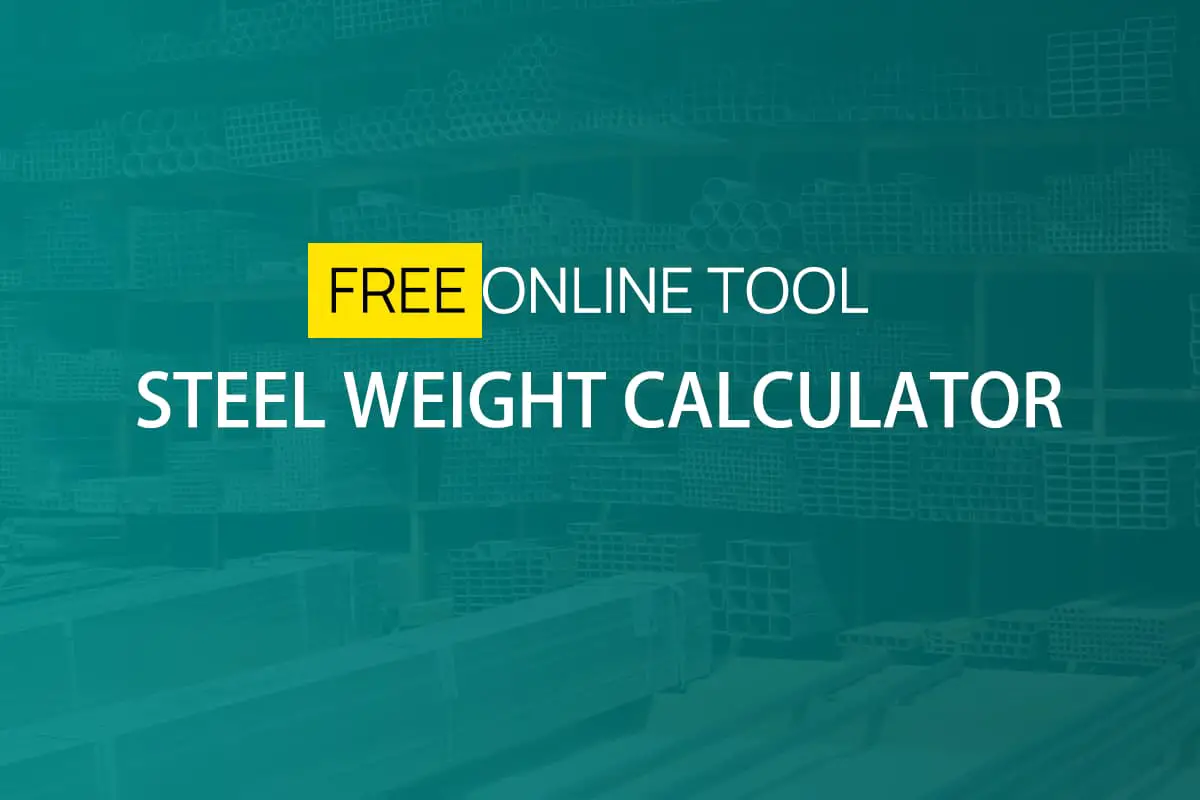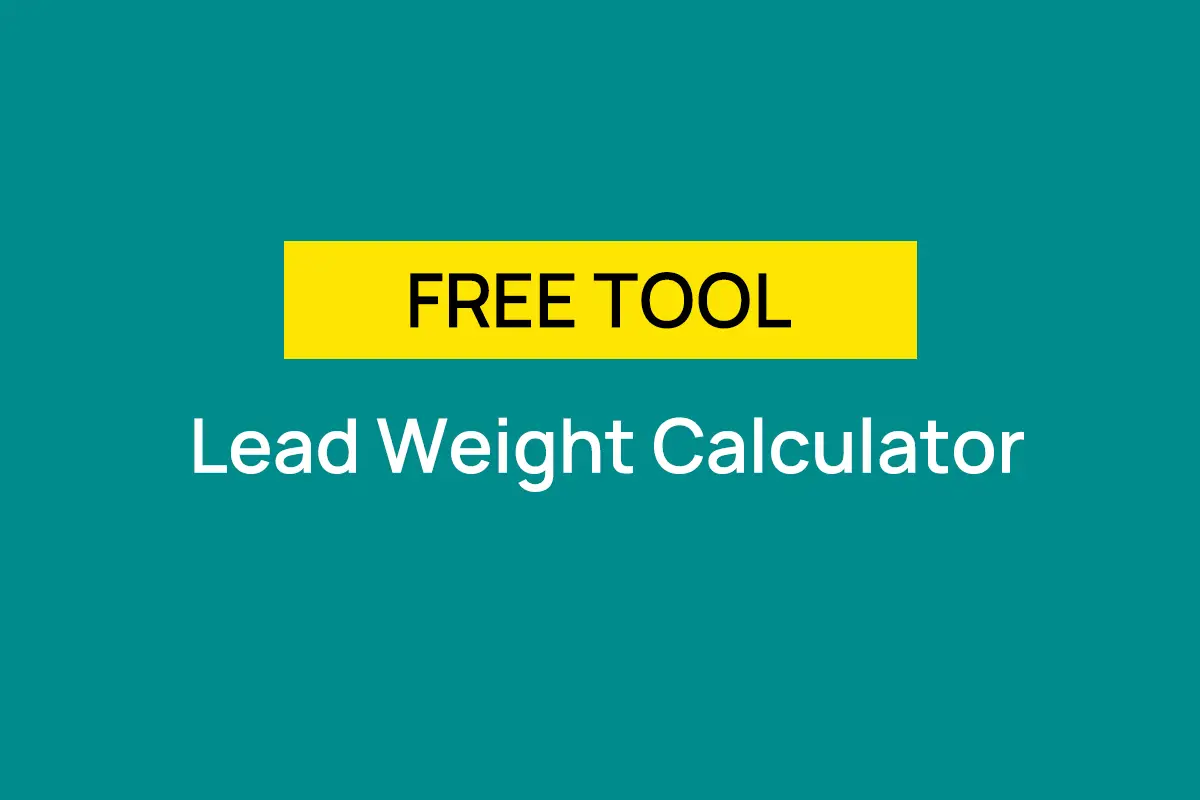
This article explores the fascinating world of ferrous and non-ferrous metals, revealing their unique properties and classifications. By the end, you’ll understand the essential differences and applications of these crucial materials in everyday life.
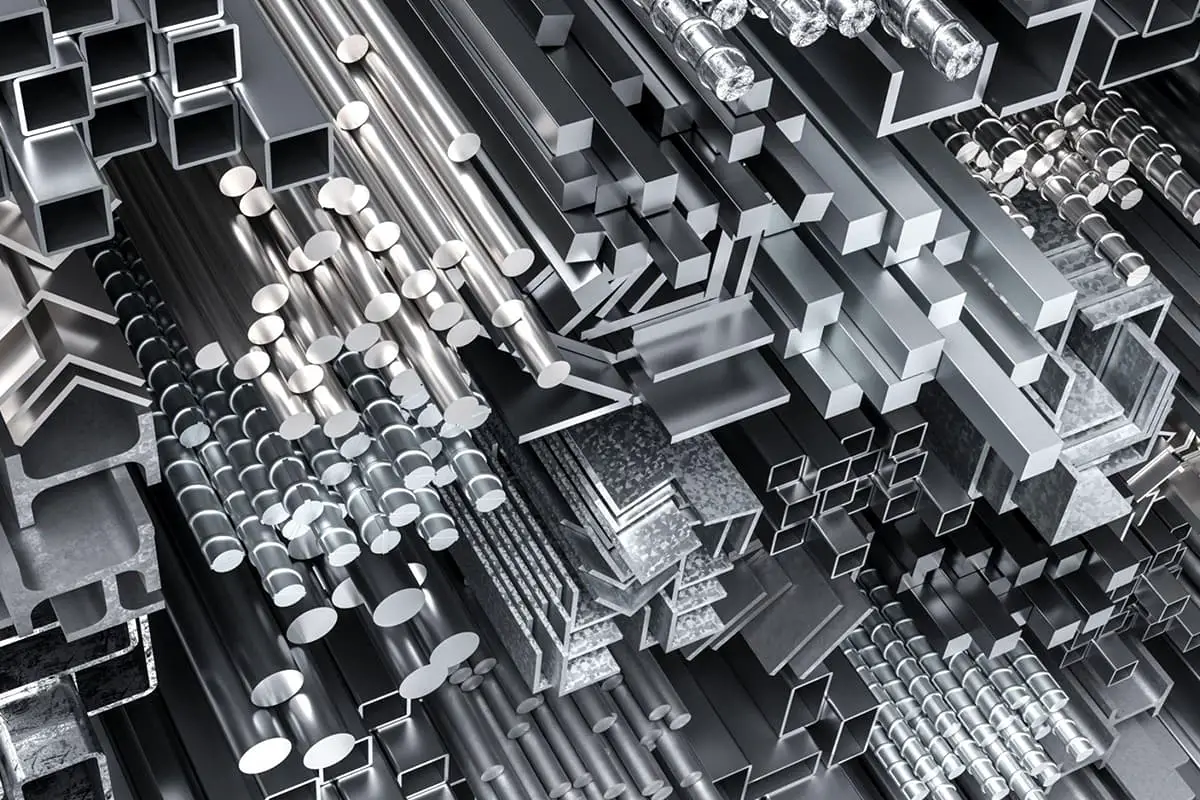

Let’s first briefly introduce the basic concepts of ferrous metals, steel, and non-ferrous metals before delving into the classification of steel.
Pig iron, produced by smelting iron ore in a blast furnace, serves as a crucial intermediate for steelmaking and casting applications.
Cast iron is derived from melting pig iron in a furnace and subsequently pouring the liquid metal into molds to create cast components. This process yields parts with excellent wear resistance and vibration damping properties.
Ferroalloys are iron-based alloys containing elements such as silicon, manganese, chromium, and titanium. These alloys play a vital role in steelmaking as deoxidizers and alloying additives, enabling precise control of steel composition and properties.
These alloying elements are crucial for enhancing the properties of metals. For instance, tungsten, titanium, and molybdenum are often utilized in producing hard alloys for cutting tools, significantly improving wear resistance and high-temperature performance.
The aforementioned non-ferrous metals are collectively referred to as industrial metals. Additionally, the category includes precious metals like platinum, gold, and silver, as well as rare metals such as uranium and radium, which have specialized applications in various high-tech and energy sectors.
Steel is an iron-carbon alloy with a carbon content ranging from 0.04% to 2.3%. To ensure its toughness and plasticity, the carbon content generally does not exceed 1.7%.
In addition to iron and carbon, the main elements of steel include silicon, manganese, sulfur, and phosphorus. There are various methods to classify steel, with the following seven being the primary ones:
1. Classification by quality:
(1) Ordinary steel (P≤0.045%, S≤0.050%)
(2) High-quality steel (P, S both ≤0.035%)
(3) Advanced high-quality steel (P≤0.035%, S≤0.030%)
2. Classification by chemical composition:
(1) Carbon steel:
(2) Alloy steel:
3. Classification by forming method:
(1) Forged steel;
(2) Cast steel;
(3) Hot-rolled steel;
(4) Cold-drawn steel.
4. Classification by metallographic structure:
(1) Annealed state:
(2) Normalized state:
(3) Non-transforming or partially transformed.
5. Classification by Usage:
(1) Steel for construction and engineering:
(2) Structural steel:
a. Steel for mechanical manufacturing:
b. Spring steel
c. Bearing steel
(3) Tool steel:
(4) Steel with special properties:
(5) Professional steel: such as bridge steel, marine steel, boiler steel, pressure vessel steel, agricultural machinery steel, etc.
6. Comprehensive Classification:
(1) Ordinary steel:
a. Carbon structural steel:
b. Low alloy structural steel
c. Ordinary structural steel for specific purposes
(2) Quality steel (including high-grade quality steel)
a. Structural steel:
b. Tool steel:
c. Special performance steel:
7. Classification by Smelting Methods
(1) Categorized by Furnace Types
a. Open Hearth Steel:
b. Converter Steel:
or
c. Electric Furnace Steel:
(2) Categorized by Degree of Deoxidation and Casting System
Steel materials can be divided into four major categories based on shape: profiles, plates, tubes, and metal products. To facilitate procurement, ordering, and management, currently, China classifies steel into sixteen major types:
| Category | Product Type | Statement |
| Profiled Bar | Heavy Rail | Steel rails with a weight exceeding 30 kilograms per meter (including crane rail) |
| Light Rail | Steel rails with a weight of 30 kilograms per meter or less. | |
| Large Section Steel | Ordinary steel includes round, square, flat, hexagonal, I-beam, channel, equal and unequal angle steel, as well as threaded steel. According to size, these can be categorized as large, medium, and small. | |
| Medium Section Steel | ||
| Small Section Steel | ||
| Wire Rod | Round steel and disc bars with diameters of 5-10 millimeters. | |
| Cold-Formed Steel | Section steel formed by cold bending of steel or steel strips. | |
| High-Quality Profiles | High-quality round steel, square steel, flat steel, hexagonal steel, and more. | |
| Other Steel Materials | Including heavy rail components, axle blanks, tire rings, among others. | |
| Sheet metal | Thin Steel Sheet | Steel plates with thicknesses equal to or less than 4 millimeters. |
| Thick Steel Sheet | Steel plates with thicknesses greater than 4 millimeters. | |
| It can be classified into medium plates (thickness greater than 4mm and less than 20mm), thick plates (thickness greater than 20mm and less than 60mm), and extra-thick plates (thickness greater than 60mm). | ||
| Steel Strip | Also known as strip steel, it is actually a thin steel plate that is long, narrow, and supplied in rolls. | |
| Electrical Silicon Steel Sheet | Also referred to as silicon steel sheet. | |
| Pipe Material | Seamless Steel Pipes | Seamless steel pipes produced by methods such as hot rolling, hot rolling-cold drawing, or extrusion. |
| Welded Steel Pipes | Steel pipes are formed by curling and shaping steel plates or steel strips, and then welded together. | |
| Metallic Products | Metal Products | This includes steel wires, steel cables, and steel strands. |
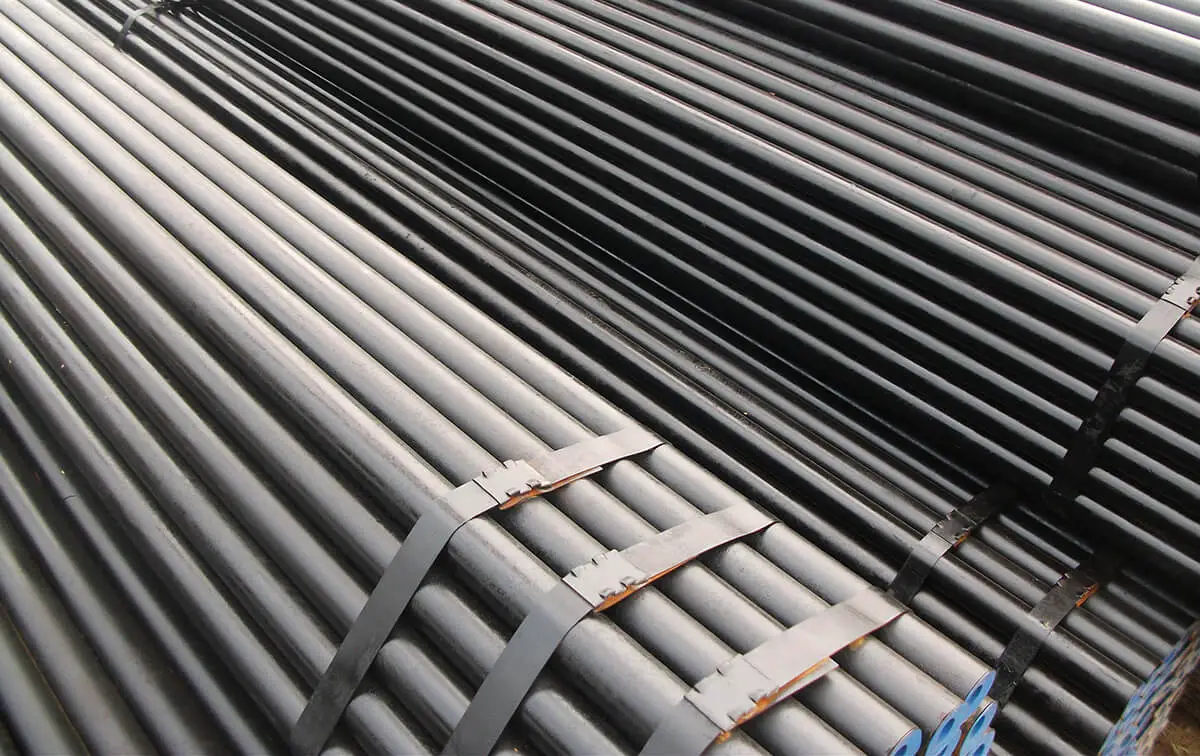
Carbon steel, also known as plain carbon steel, is a fundamental ferrocarbon alloy containing up to 2% carbon (wc) by weight. This versatile material forms the backbone of numerous industrial applications due to its balanced mechanical properties and cost-effectiveness.
In addition to carbon, carbon steel typically contains small but significant amounts of alloying elements, including silicon (for deoxidation), manganese (for strength and hardenability), sulfur (for machinability), and phosphorus (for strength in low concentrations). The precise control of these elements is crucial for achieving desired material characteristics.
Carbon steel can be classified into three primary categories based on its intended use:
Based on carbon content, carbon steel is further categorized into:
Additionally, carbon steel is classified according to its phosphorus and sulfur content:
It is crucial to understand that as the carbon content in carbon steel increases, its hardness and strength improve significantly. However, this comes at the expense of reduced plasticity and weldability. This inverse relationship between strength and ductility necessitates careful material selection based on specific application requirements, considering factors such as load-bearing capacity, formability, and fabrication methods.
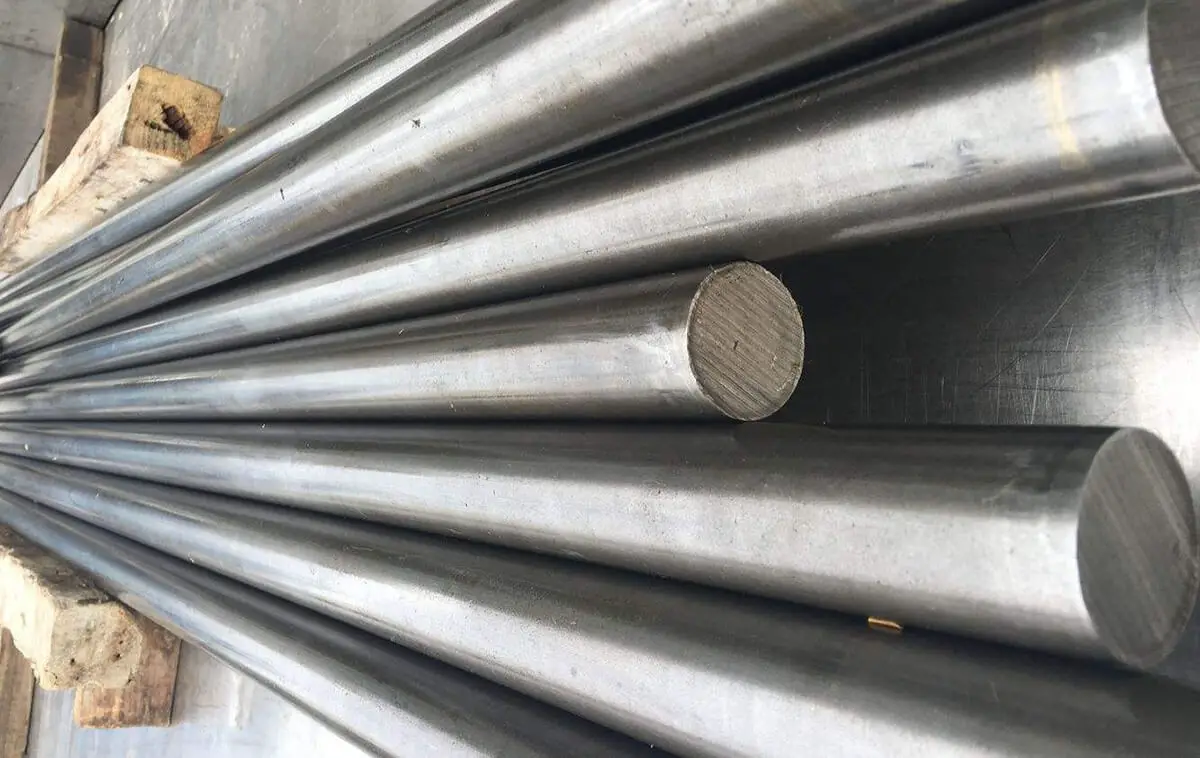
The mechanical properties of carbon steel are primarily reflected in its grade designation, which typically begins with the letter “Q” followed by numbers. The “Q” denotes yield strength, while the subsequent numbers represent the minimum yield strength value in megapascals (MPa). For instance, Q275 indicates a steel grade with a minimum yield strength of 275 MPa.
Additional letters A, B, C, or D following the grade number signify different quality levels, with decreasing sulfur (S) and phosphorus (P) content in that order. This progression corresponds to an overall increase in steel quality, with D representing the highest quality among these designations.
The presence of “F” after the grade indicates rimmed steel, while “b” denotes semi-killed steel. The absence of either “F” or “b” implies killed steel. For example, Q235-A·F represents grade A rimmed steel with a minimum yield strength of 235 MPa, while Q235-C denotes grade C killed steel with the same yield strength.
Carbon structural steel is generally utilized in its as-supplied condition without further heat treatment, making it cost-effective for various applications.
Low carbon steel grades such as Q195, Q215, and Q235 exhibit excellent weldability, formability, and toughness, combined with moderate strength. These grades are widely employed in the production of thin plates, reinforcing bars, welded steel pipes, and various structural components. They are also suitable for manufacturing standard fasteners like rivets, screws, and nuts due to their balanced properties.
Steel grades with slightly higher carbon content, such as Q255 and Q275, offer increased strength while maintaining good plasticity and toughness. These grades remain weldable, making them versatile for structural applications. They are frequently used in the fabrication of load-bearing structural members, connecting rods, gears, couplings, and components for less complex machinery where a balance of strength and formability is required.
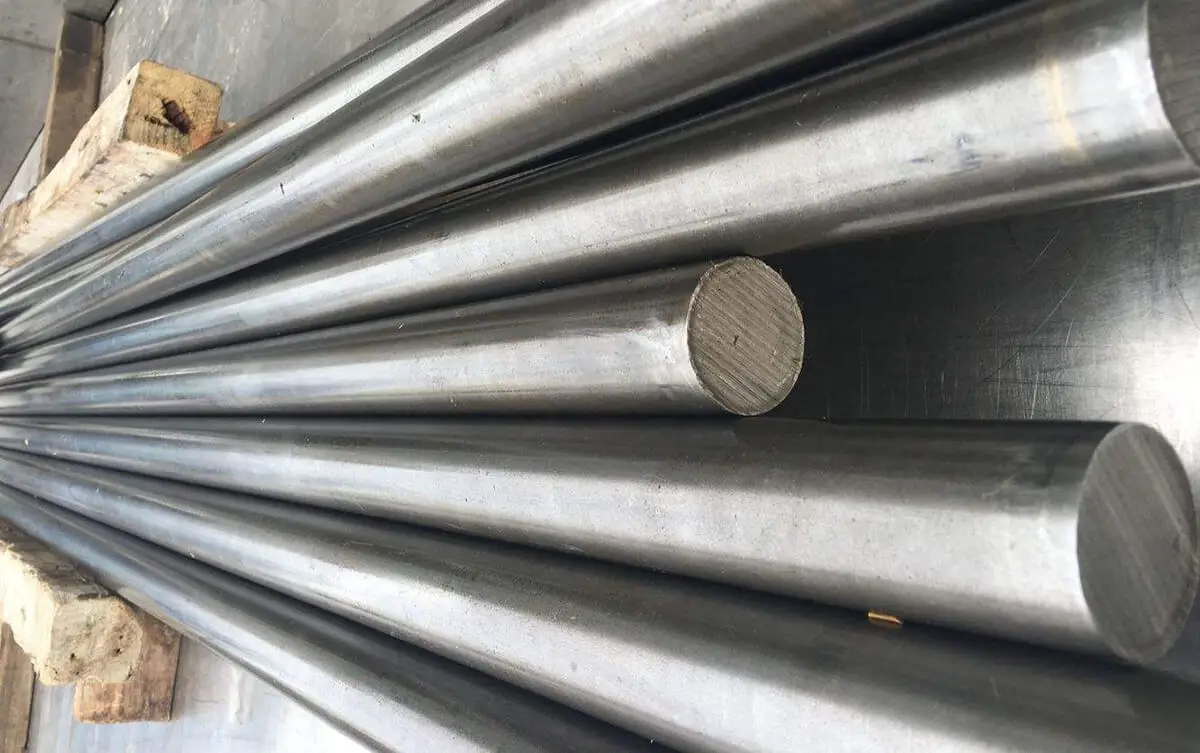
Carbon steel must meet specific chemical composition and mechanical property requirements. The grade designation of carbon steel utilizes a two-digit system, representing 10000 times the average carbon mass fraction in the steel (wc × 10000). For instance, 45 steel contains an average carbon mass fraction of 0.45%, while 08 steel has 0.08%.
High-quality carbon structural steel is primarily employed in the fabrication of machine components. It often undergoes heat treatment processes to enhance its mechanical properties, tailoring them to specific applications.
The carbon content significantly influences the steel’s properties and applications:
Low-carbon steels (08, 08F, 10, 10F) exhibit high plasticity and toughness, excelling in cold forming and welding. These grades are frequently cold-rolled into thin sheets for cold-stamped parts in instruments, automobiles, and agricultural machinery. Examples include automotive body panels and tractor cabs, where formability and weldability are crucial.
Medium-low carbon steels (15, 20, 25) are ideal for case-hardened parts requiring wear-resistant surfaces but lower core strength. These grades are commonly used in small, lightly loaded components such as piston pins and sample plates. The carburizing process creates a hard, wear-resistant surface while maintaining a tough core.
Medium carbon steels (30, 35, 40, 45, 50) achieve an excellent balance of mechanical properties through quenching and high-temperature tempering. Their combination of strength, plasticity, and toughness makes them suitable for critical components like crankshafts, connecting rods, machine tool spindles, and gears. The heat treatment process can be optimized to achieve the desired property profile for specific applications.
High-carbon steels (55, 60, 65) develop a high elastic limit after quenching and medium-temperature tempering. This characteristic makes them ideal for manufacturing small, lightly loaded springs (with cross-sections less than 12-15mm). Applications include pressure-regulating springs, speed-control springs, plunger springs, and cold-coiled springs, where high elastic strength and fatigue resistance are essential.
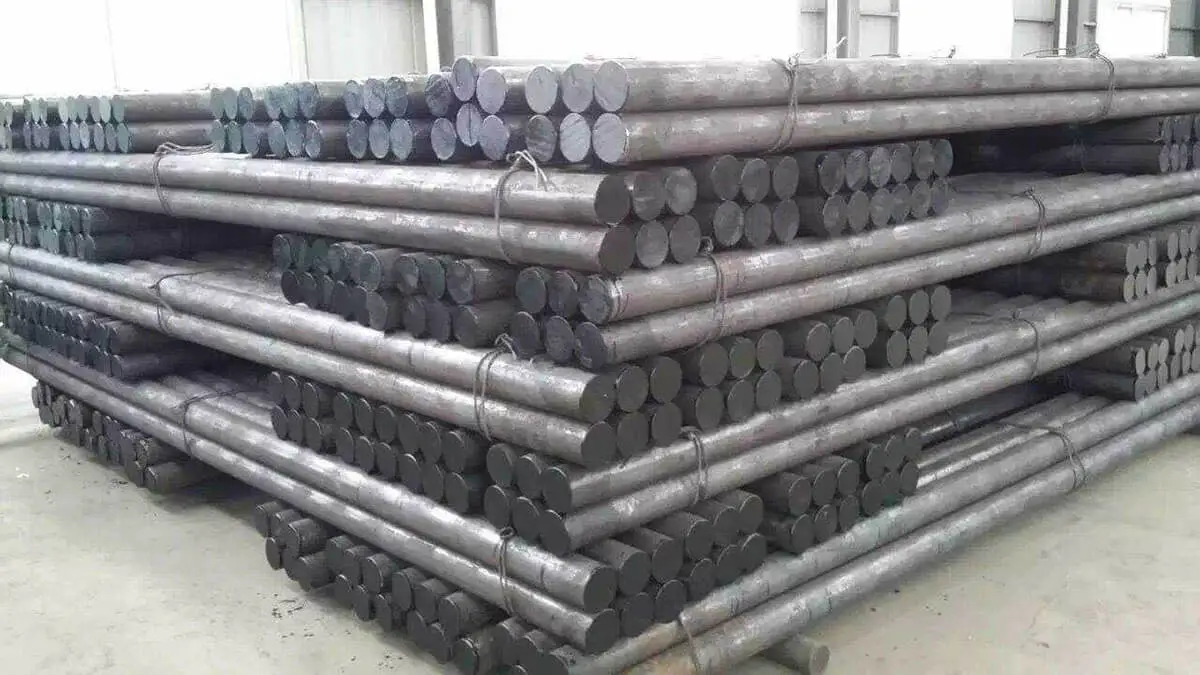
Carbon tool steel is a high-carbon steel alloy containing minimal alloying elements, with carbon content typically ranging from 0.60% to 1.50%. This composition imparts unique properties that make it suitable for specific industrial applications.
Carbon tool steel is widely utilized in manufacturing due to its cost-effectiveness, readily available raw materials, excellent machinability, and ability to achieve high hardness and wear resistance through heat treatment. These characteristics make it an ideal choice for producing various cutting tools, dies, molds, and precision measuring instruments.
However, carbon tool steel exhibits poor red hardness, a significant limitation in high-temperature applications. When the operating temperature exceeds approximately 200°C (392°F), the material experiences a rapid decline in hardness and wear resistance, compromising its functional integrity. This restricts its use in high-speed machining or applications involving sustained elevated temperatures.
Furthermore, carbon tool steel presents challenges in heat treatment, particularly for larger components. The limited hardenability can result in non-uniform hardness distribution across the cross-section of thick sections. This characteristic, coupled with the high carbon content, increases the risk of distortion and cracking during quenching, necessitating careful control of heating and cooling rates during heat treatment processes.
Despite these limitations, carbon tool steel remains a valuable material in many manufacturing scenarios where its strengths can be leveraged, and its weaknesses can be mitigated through proper design and processing considerations.
Related reading: Cutting Tools Basics
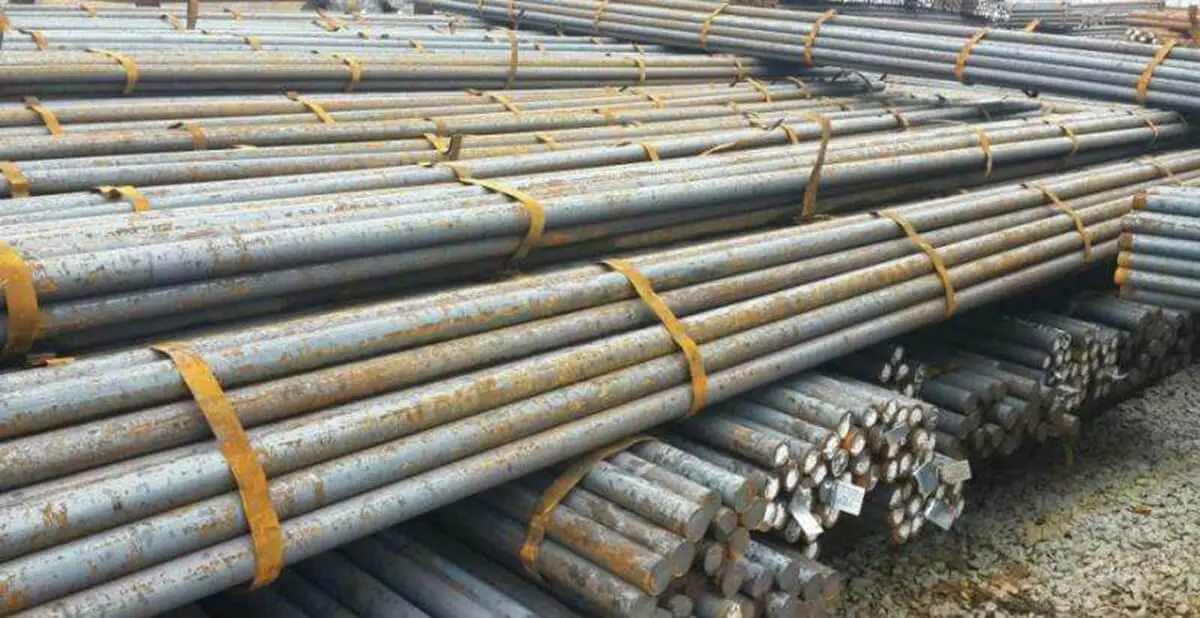
Free-cutting structural steel is engineered for enhanced machinability by incorporating specific elements that promote chip formation and breakage during cutting operations. This design improves cutting efficiency and extends tool life, making it ideal for high-volume production.
Sulfur is the primary element used to increase the steel’s brittleness and improve its machinability. In addition to sulfur, elements such as lead, tellurium, and bismuth are commonly added to low-alloy free-cutting structural steels to further enhance their machining characteristics.
The sulfur content (ws) in free-cutting steel typically ranges from 0.08% to 0.30%, while the manganese content (wMn) is controlled between 0.60% and 1.55%. These elements combine to form manganese sulfide (MnS) inclusions within the steel matrix. MnS inclusions are highly brittle and possess inherent lubricating properties, which serve two critical functions:
This combination of properties results in improved chip control, reduced cutting forces, and enhanced surface finish quality of the machined components. Additionally, the presence of MnS inclusions helps to minimize built-up edge formation on cutting tools, further contributing to improved tool life and consistent part quality in high-volume production environments.
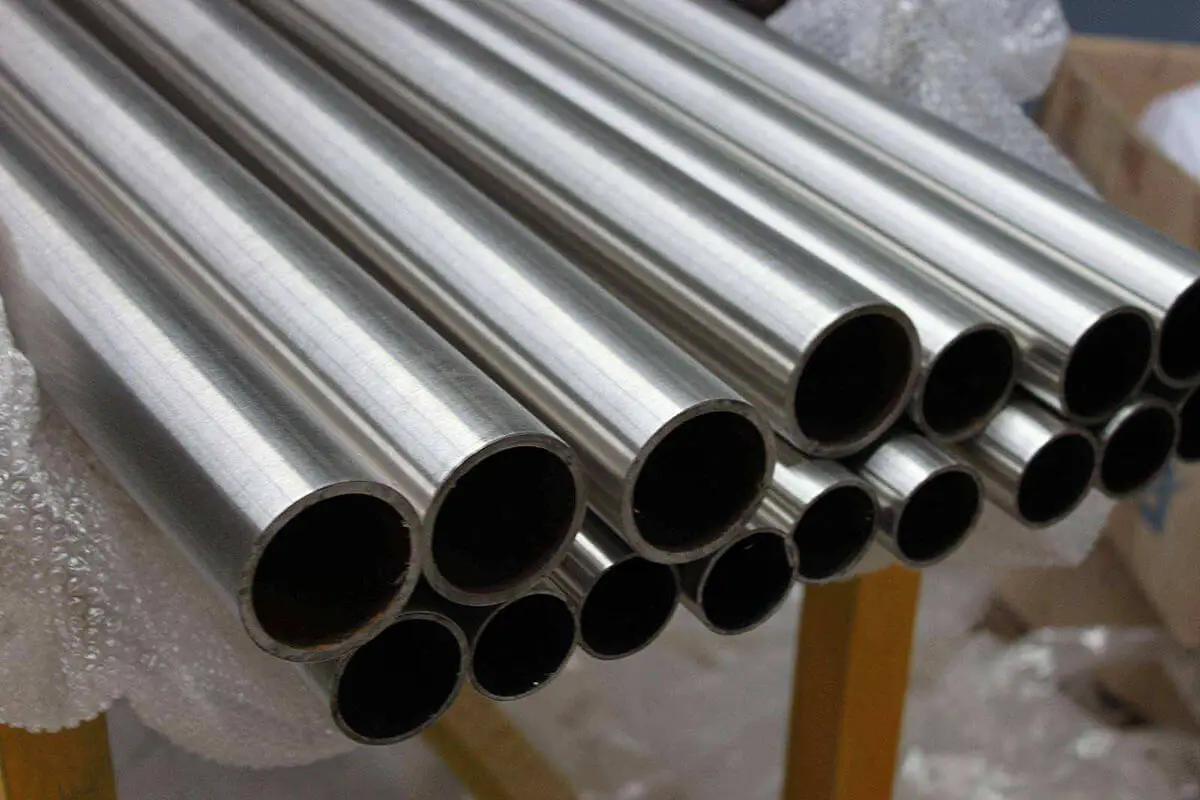
Steel, beyond its basic composition of iron and carbon, can incorporate a diverse array of alloying elements to enhance specific properties. These elements include silicon, manganese, molybdenum, nickel, chromium, vanadium, titanium, niobium, boron, lead, and rare earth metals. The intentional addition of these elements in varying proportions results in what is known as alloy steel.
The development of alloy steel systems varies globally, influenced by each country’s natural resources, industrial capabilities, and market demands. For instance, Western countries have historically focused on nickel and chromium-based alloy systems, leveraging their abundant resources in these elements. In contrast, China has pioneered alloy steel systems utilizing silicon, manganese, vanadium, titanium, niobium, boron, and rare earth elements, aligning with its domestic resource availability and technological strengths.
It’s noteworthy that alloy steel constitutes approximately 10-15% of global steel production, a figure that has been gradually increasing due to growing demand for high-performance materials in various industries.
Alloy steels produced via electric arc furnace (EAF) technology can be categorized into eight primary classes based on their intended applications:
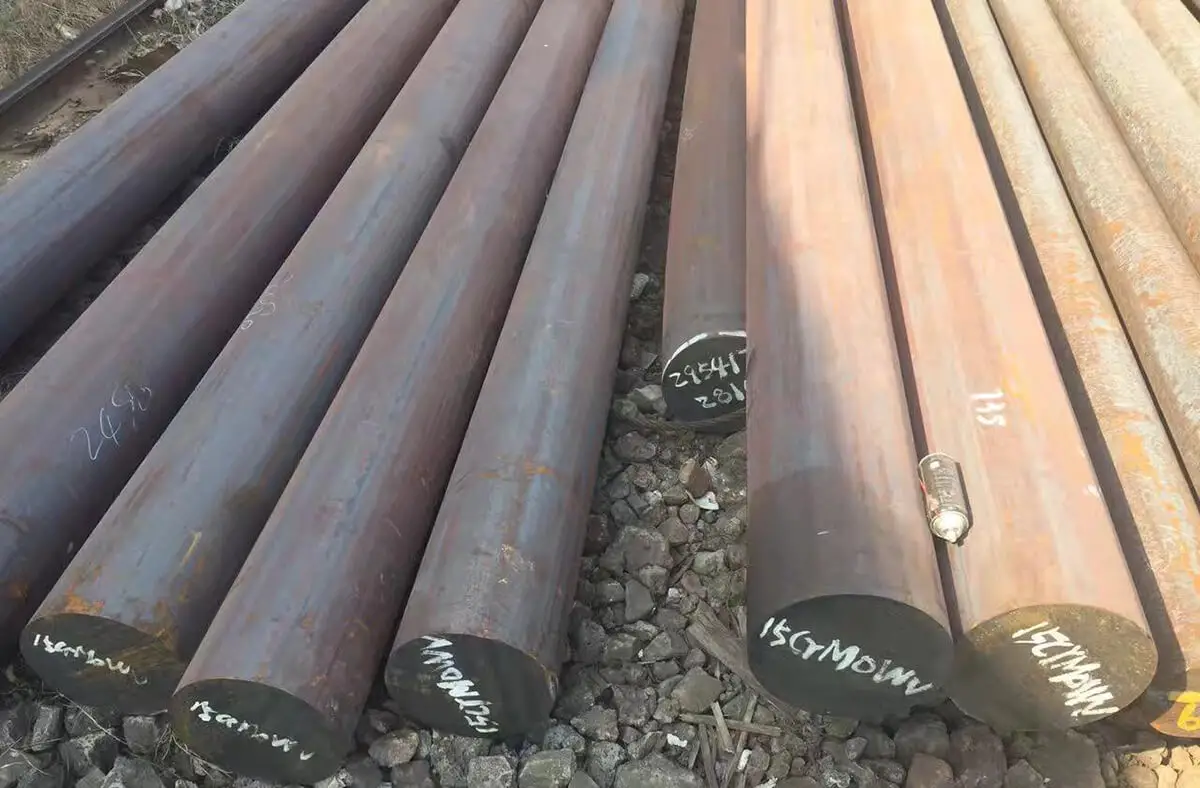
Ordinary low alloy steel, also known as high-strength low-alloy (HSLA) steel, is a category of ferrous materials containing small amounts of alloying elements, typically ranging from 1% to 5% of the total composition. These alloying elements may include manganese, silicon, nickel, chromium, molybdenum, and vanadium, among others.
This class of steel exhibits superior mechanical properties compared to carbon steel, including enhanced strength, improved toughness, and better corrosion resistance. The carefully selected alloying elements contribute to its excellent comprehensive performance, including improved wear resistance, low-temperature toughness, and superior weldability and machinability.
In applications where conservation of critical alloying elements like nickel and chromium is paramount, ordinary low alloy steel offers significant advantages. Typically, 1 ton of this material can effectively replace 1.2 to 1.5 tons of carbon steel, depending on the specific grade and application. This substitution not only results in weight reduction but also extends service life and broadens the range of potential applications, particularly in structural and automotive industries.
Manufacturing of ordinary low alloy steel can be accomplished through various steelmaking processes, including basic oxygen furnaces (BOF), electric arc furnaces (EAF), or the traditional open hearth method. Advanced secondary metallurgy techniques, such as ladle refining and vacuum degassing, are often employed to achieve precise chemical compositions and superior cleanliness. Despite the addition of alloying elements, the production cost of HSLA steel remains competitive, often only marginally higher than that of carbon steel, making it an economically viable option for many engineering applications.
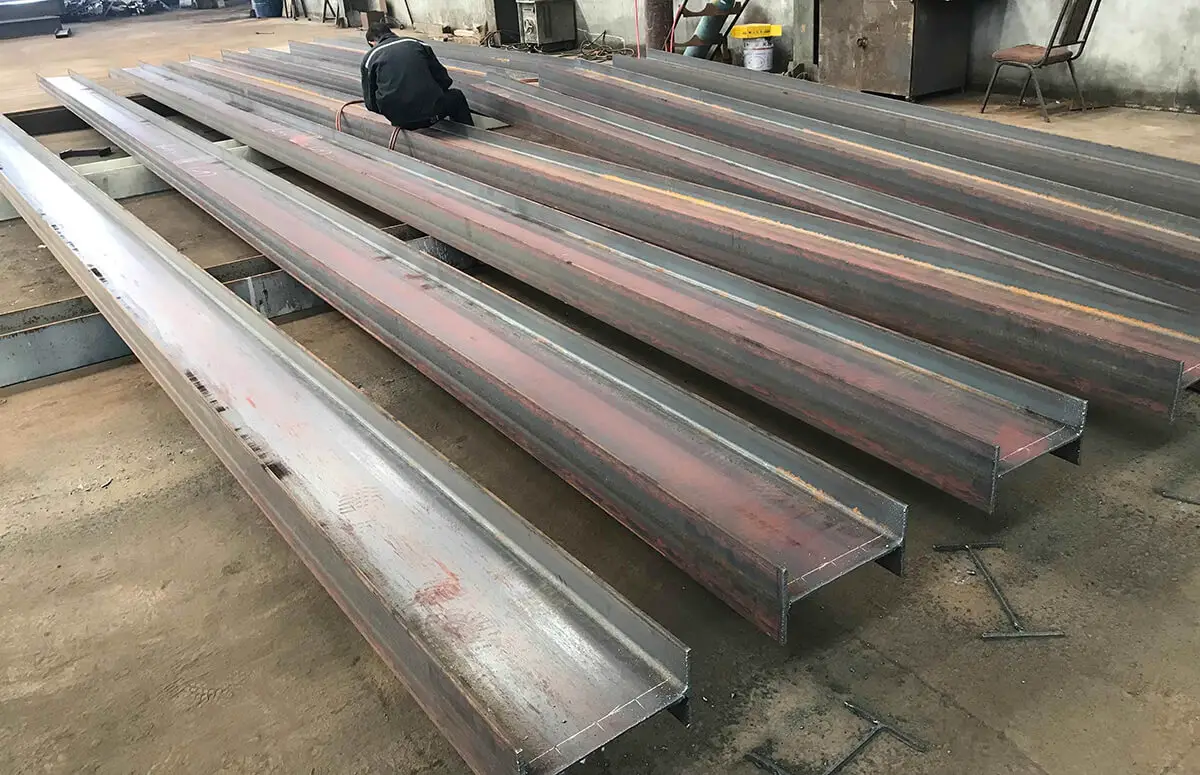
Engineering structural steel encompasses a diverse range of alloy steels specifically designed for use in engineering and building structures. This category includes high-strength low-alloy (HSLA) steels, alloy reinforcement steels, railway-grade alloy steels, oil drilling-grade alloy steels, pressure vessel-grade alloy steels, and high manganese wear-resistant steels, among others.
These steels are engineered to provide optimal performance in load-bearing applications, offering an excellent balance of strength, ductility, and weldability. Their primary function is to serve as critical structural members in various engineering and construction projects, ranging from skyscrapers and bridges to industrial facilities and offshore platforms.
While the total content of alloying elements in these steels is relatively low (typically less than 5% by weight), their impact on mechanical properties is significant. The careful addition of elements such as manganese, nickel, chromium, and vanadium in precise amounts allows for tailored properties to meet specific application requirements. This optimization results in steels that exhibit superior strength-to-weight ratios, improved corrosion resistance, and enhanced formability compared to plain carbon steels.
The widespread adoption of engineering structural steels can be attributed to several factors:
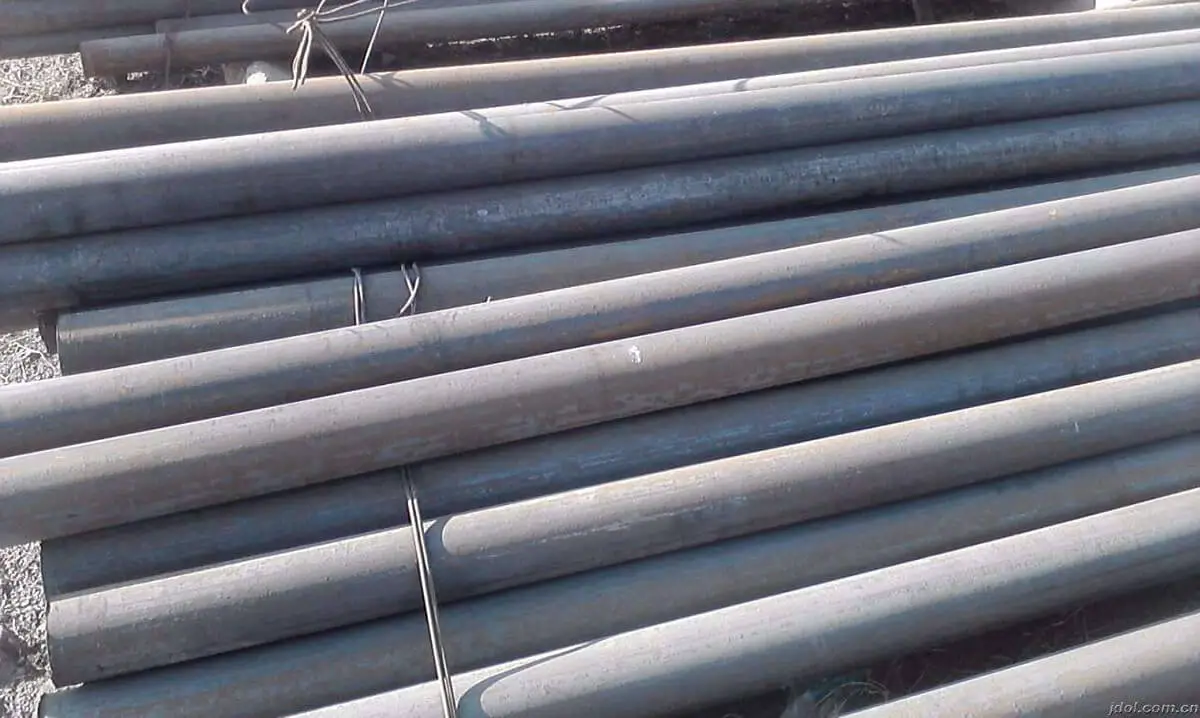
Mechanical structural steel refers to a class of alloy steels specifically engineered for the fabrication of machines and critical machine components. These steels are designed to meet the demanding requirements of modern mechanical systems.
Building upon a foundation of high-quality carbon steel, these alloys incorporate one or more carefully selected alloying elements to enhance key properties:
Mechanical structural steels typically undergo heat treatment processes to optimize their mechanical properties. Common treatments include:
The two primary categories of mechanical structural steel are:
These categories encompass several specialized types:
Based on their chemical composition, mechanical structural steels can be classified into several series:
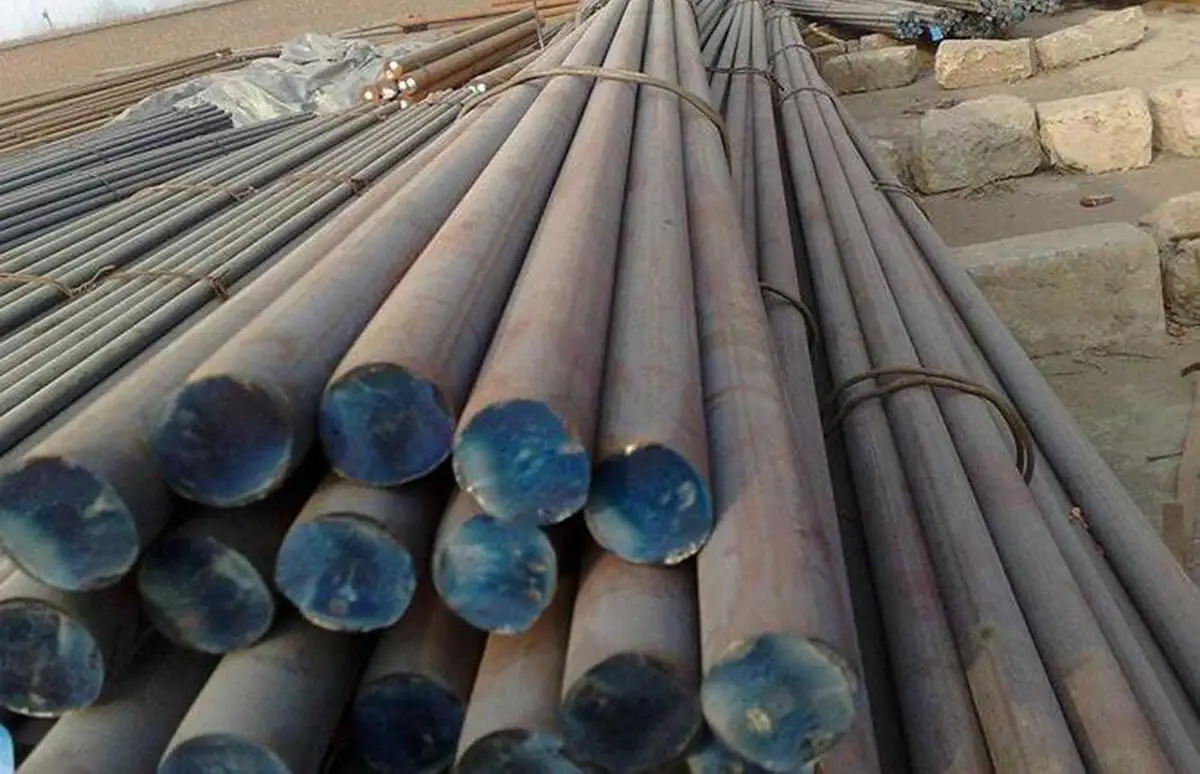
Alloy structural steel is characterized by a carbon content (wc) typically ranging from 0.15% to 0.50%, generally lower than that of carbon structural steel. It incorporates one or more alloying elements in addition to carbon, including silicon, manganese, vanadium, titanium, boron, nickel, chromium, and molybdenum. These elements are carefully selected and proportioned to impart specific mechanical and physical properties to the steel.
The distinguishing feature of alloy structural steel is its enhanced hardenability and superior resistance to deformation and cracking under stress. This makes it particularly suitable for heat treatment processes, which can significantly improve its mechanical properties. Through precise control of heating and cooling rates, manufacturers can optimize the microstructure of the steel, resulting in an ideal combination of strength, toughness, and ductility for specific applications.
Alloy structural steel finds extensive use in critical components across various industries. It is commonly employed in the production of high-performance transmission parts, such as gears and shafts, where strength and wear resistance are paramount. In the automotive and agricultural sectors, it is used for fasteners and structural components in automobiles and tractors, respectively. The marine industry utilizes this steel in shipbuilding for critical structural elements. In power generation, alloy structural steel is crucial for steam turbine components that must withstand high temperatures and pressures. Heavy machine tools, which require materials with excellent dimensional stability and wear resistance, also benefit from the properties of alloy structural steel.
The versatility of alloy structural steel is further demonstrated by its varied heat treatment options:
These heat treatment processes can be fine-tuned to meet specific performance requirements, making alloy structural steel a highly adaptable material for diverse engineering applications.
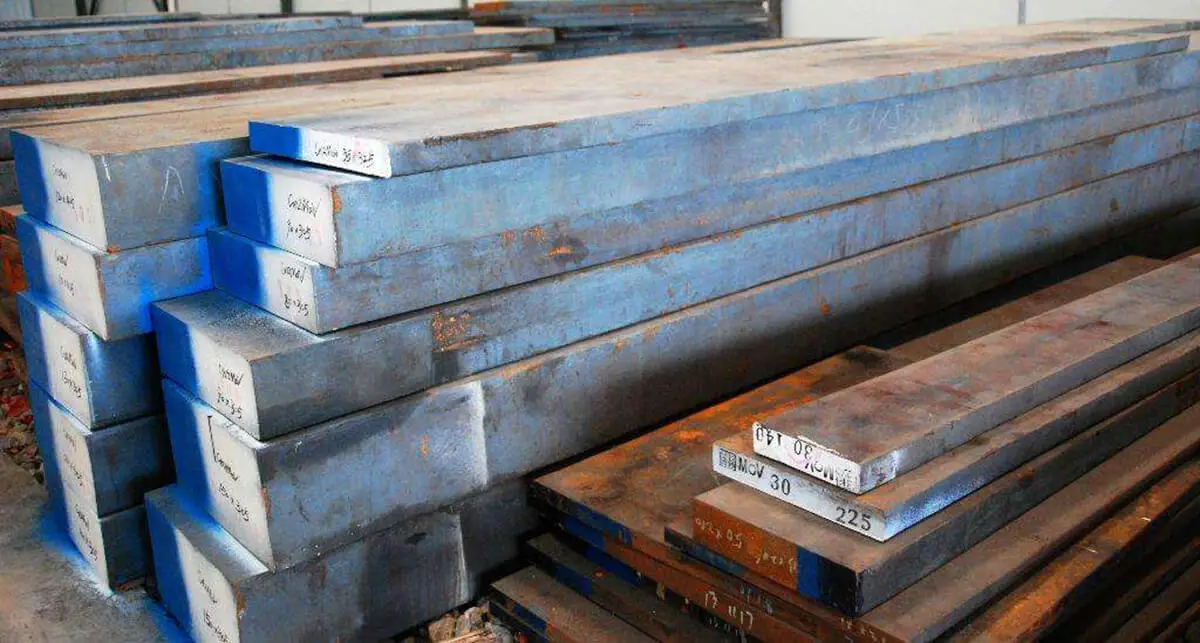
Alloy tool steels are sophisticated medium to high carbon steels engineered with precise additions of alloying elements such as silicon, chromium, tungsten, molybdenum, and vanadium. These steels are renowned for their exceptional hardenability, resistance to deformation under load, and superior crack resistance. These properties make them ideal for manufacturing large-scale and geometrically complex cutting tools, precision dies, and high-accuracy measuring instruments.
The carbon content in alloy tool steels is carefully tailored to suit specific applications, typically ranging from 0.5% to 1.5%. Hot work die steels, designed to withstand elevated temperatures and cyclic thermal stresses, feature a lower carbon content of 0.3% to 0.6%. This composition optimizes their hot strength and thermal fatigue resistance. Cutting tool steels generally contain approximately 1% carbon, balancing hardness with toughness for optimal edge retention and wear resistance.
Cold work die steels, which must endure high compressive stresses and abrasive wear at room temperature, incorporate higher carbon levels. For instance, graphite die steel, used in diamond synthesis, contains 1.5% carbon to achieve extreme hardness and wear resistance. High carbon, high chromium (D-type) cold work die steels can exceed 2% carbon content, resulting in a microstructure rich in primary carbides that impart exceptional wear resistance and dimensional stability.
The precise control of alloying elements in these steels enables the formation of complex carbides during heat treatment, significantly enhancing their mechanical properties and performance in demanding tooling applications. For example, vanadium forms fine, dispersed carbides that improve wear resistance, while chromium contributes to hardenability and corrosion resistance. Molybdenum and tungsten enhance high-temperature strength and hot hardness, critical for hot work applications.
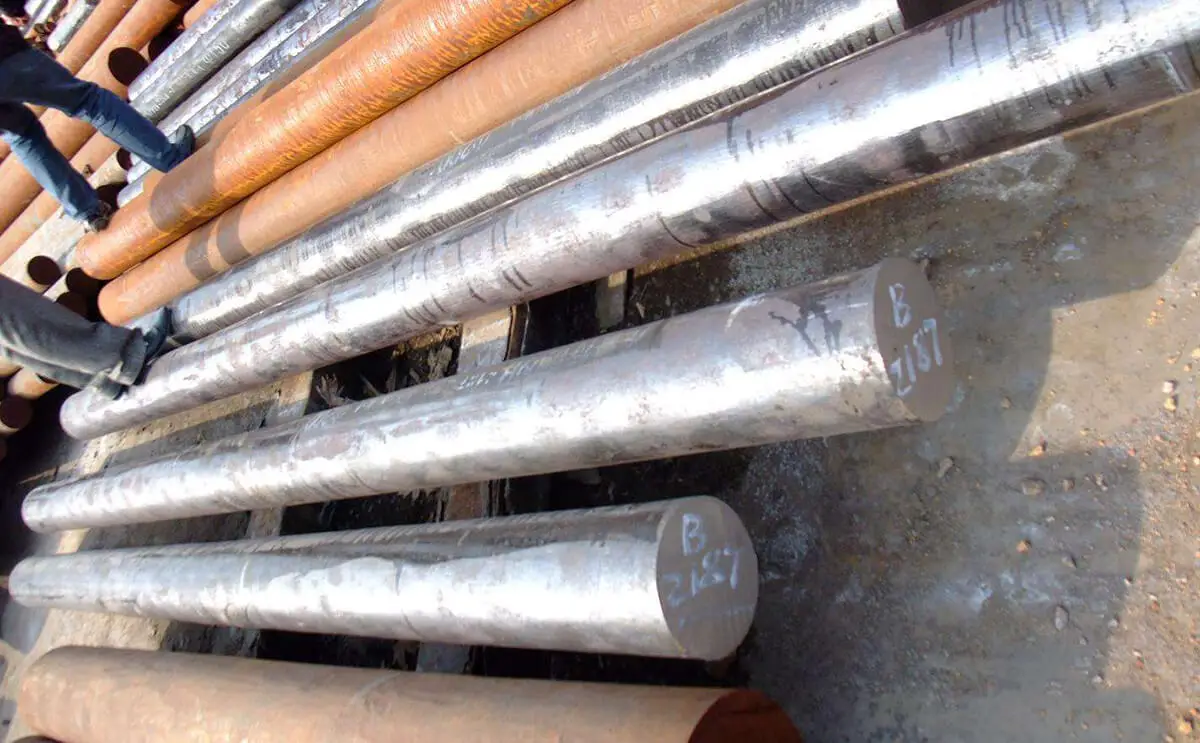
High-speed tool steel (HSS) is a sophisticated class of high-carbon, high-alloy tool steel, characterized by a carbon content typically ranging from 0.7% to 1.5%. This advanced material derives its exceptional properties from a carefully engineered composition of alloying elements, primarily tungsten, molybdenum, chromium, vanadium, and in some grades, cobalt. These elements form complex, highly stable carbides that contribute to the steel’s outstanding performance characteristics.
The hallmark feature of HSS is its remarkable red hardness, which enables it to maintain structural integrity and cutting efficiency at elevated temperatures, often exceeding 600°C (1112°F), during high-speed machining operations. This thermal stability is crucial in modern manufacturing, where cutting speeds and feeds continue to increase, generating significant heat at the tool-workpiece interface.
HSS exhibits excellent wear resistance, toughness, and the ability to withstand thermal shock. These properties make it an ideal material for a wide range of cutting tools, including drill bits, end mills, taps, and saw blades, particularly in applications involving difficult-to-machine materials or where high-volume production is required.
The versatility of HSS is further enhanced by its response to heat treatment. Through precise control of austenitizing, quenching, and tempering processes, manufacturers can optimize the balance between hardness (typically 62-70 HRC) and toughness to suit specific applications. Advanced coating technologies, such as TiN or AlTiN, can be applied to HSS tools to further improve wear resistance and reduce friction, extending tool life and enabling even higher cutting speeds.
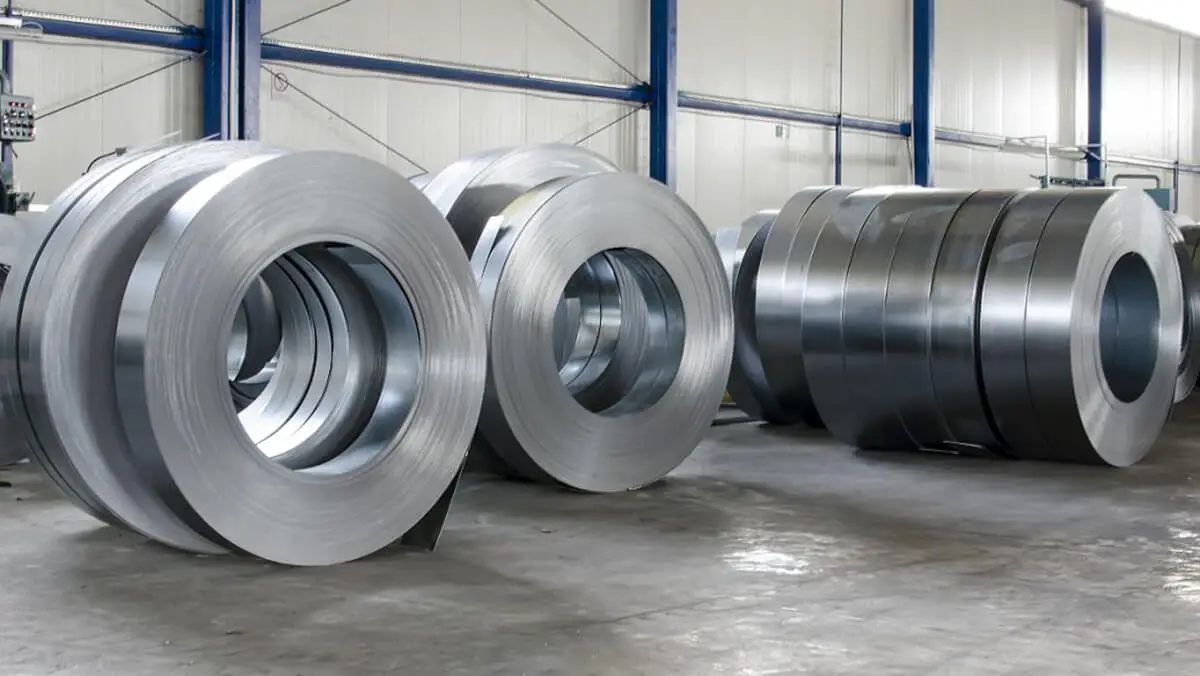
Spring steel is engineered for applications demanding exceptional resilience against impact, vibration, and cyclic loading. To excel in these demanding environments, spring steel must possess a combination of high tensile strength, elevated elastic limit, and superior fatigue resistance.
From a metallurgical perspective, spring steel requires excellent hardenability to achieve consistent mechanical properties throughout its cross-section. It must also exhibit resistance to decarburization during heat treatment processes and maintain a high-quality surface finish to minimize stress concentration points.
Carbon spring steels are high-performance carbon structural steels containing 0.6% to 0.9% carbon. These steels are further classified into normal and high manganese variants, with the latter offering enhanced strength and wear resistance. Alloy spring steels, primarily silicon-manganese based, typically feature a slightly lower carbon content (0.5% to 0.7%) but incorporate increased silicon levels (1.3% to 2.8%) to improve elastic properties and fatigue strength. Additional alloy spring steel grades incorporate chromium for enhanced hardenability, tungsten for high-temperature strength retention, and vanadium for grain refinement and precipitation hardening.
Leveraging domestic resources and addressing the evolving requirements of automotive and agricultural machinery design, a new generation of spring steel has been developed. This innovative grade builds upon the silicon-manganese base, incorporating precise additions of boron for improved hardenability, niobium for grain refinement and precipitation strengthening, and molybdenum for enhanced temper resistance and elevated temperature performance. This tailored composition significantly extends spring service life and elevates overall component quality, meeting the demands of modern, high-performance applications.
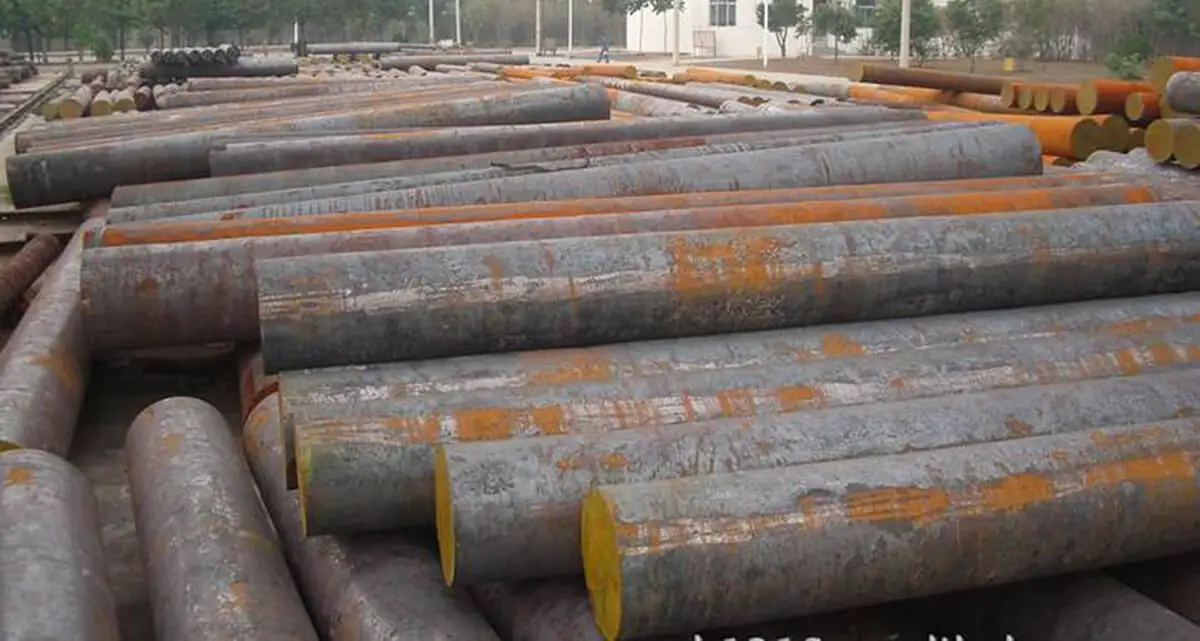
Bearing steel is a specialized alloy engineered for the production of critical components in rolling element bearings, including balls, rollers, and races. These components are subjected to extreme cyclic stresses, high-speed rotation, and constant friction, necessitating a material with exceptional mechanical properties.
The primary attributes of high-quality bearing steel include:
The stringent performance requirements demand rigorous control over the steel’s composition and microstructure. Manufacturers enforce strict limits on:
The most common type of bearing steel is high-carbon chromium steel, typically containing:
This composition, often designated as AISI 52100 or 100Cr6, provides an optimal balance of hardenability, wear resistance, and toughness after proper heat treatment.
Other specialized bearing steels include:
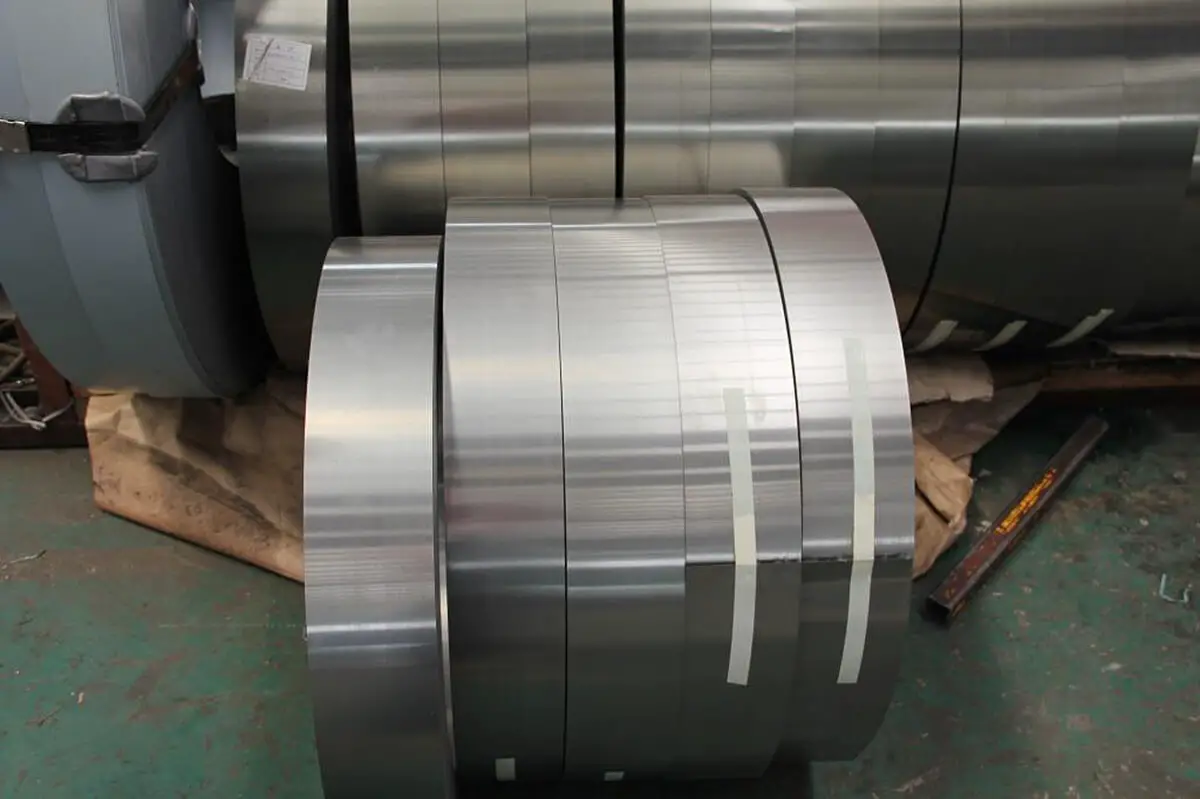
Electrical silicon steel, also known as electrical steel or lamination steel, is a specialized ferromagnetic material crucial in the power generation and distribution industry. It is primarily used to produce silicon steel sheets, which are essential components in the manufacturing of electric motors, transformers, and other electromagnetic devices.
Silicon steel can be classified into two main categories based on its chemical composition and magnetic properties:
1. Non-oriented Electrical Steel (NOES):
2. Grain-oriented Electrical Steel (GOES):
The carbon content in both types of silicon steel is typically maintained at ≤0.06% to 0.08% to minimize aging effects and improve magnetic properties. Other alloying elements such as aluminum, manganese, and phosphorus may be added in small quantities to enhance specific characteristics.
Key properties of electrical silicon steel include:
Manufacturing processes for electrical silicon steel involve precise control of composition, hot rolling, cold rolling, and specialized heat treatments to achieve the desired grain structure and magnetic properties. Advanced techniques such as laser scribing and domain refinement are often employed to further reduce core losses in high-performance grades.
The global demand for high-efficiency electrical silicon steel continues to grow, driven by energy efficiency regulations and the increasing adoption of electric vehicles and renewable energy systems.
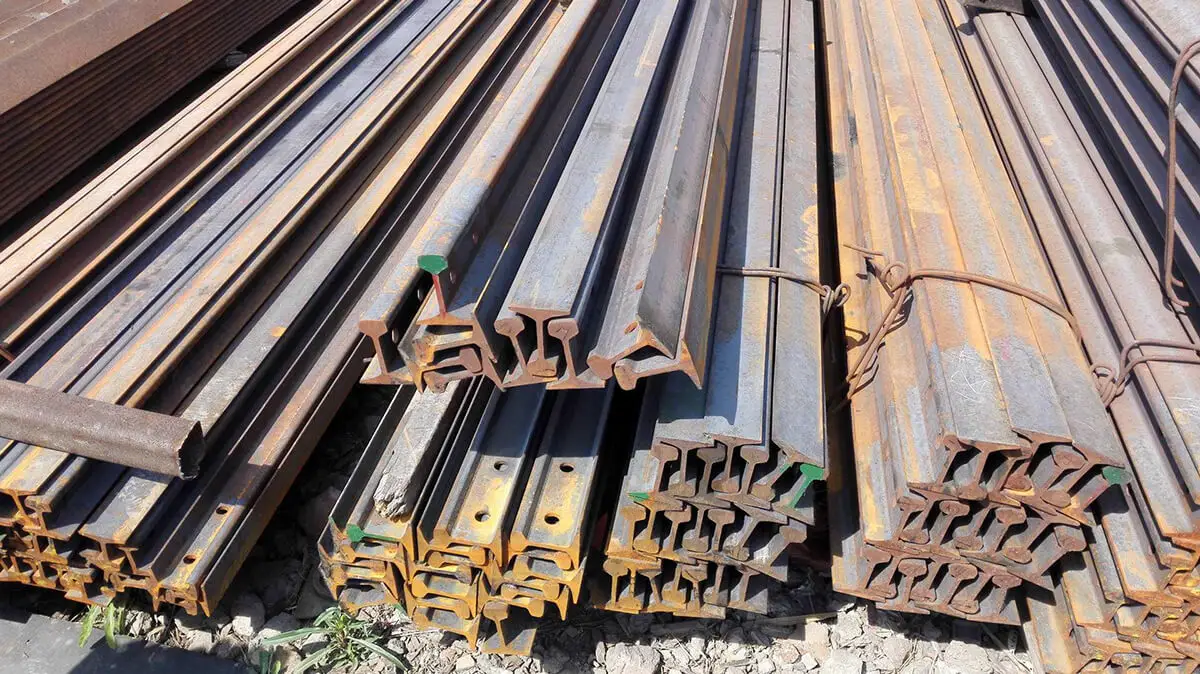
Rail steel is engineered to withstand the extreme pressures and dynamic loads exerted by rolling stock, necessitating a precise balance of strength, hardness, and toughness. This critical infrastructure component demands materials that can maintain structural integrity under constant cyclic loading and environmental stresses.
The predominant material for rail production is fully-killed carbon steel, typically manufactured through basic oxygen furnace (BOF) or electric arc furnace (EAF) processes. The carbon content ranges from 0.6% to 0.8%, classifying it as medium to high-carbon steel. This composition provides the necessary hardness and wear resistance. The steel is further enhanced with a significant manganese content of 0.6% to 1.1%, which improves its strength and work-hardening capabilities.
To meet evolving performance requirements, the rail industry has increasingly adopted low-alloy steel compositions. These include:
These low-alloy variants offer superior wear and corrosion resistance compared to standard carbon steel, significantly extending the service life of rail infrastructure. The selection of specific alloy compositions is often tailored to the operational conditions of the rail line, considering factors such as traffic density, axle loads, and environmental exposure.
Recent advancements in rail steel metallurgy have focused on optimizing microstructures through controlled cooling processes and heat treatments. These techniques allow for the development of bainitic and pearlitic-martensitic structures that further enhance the steel’s mechanical properties and resistance to rolling contact fatigue.
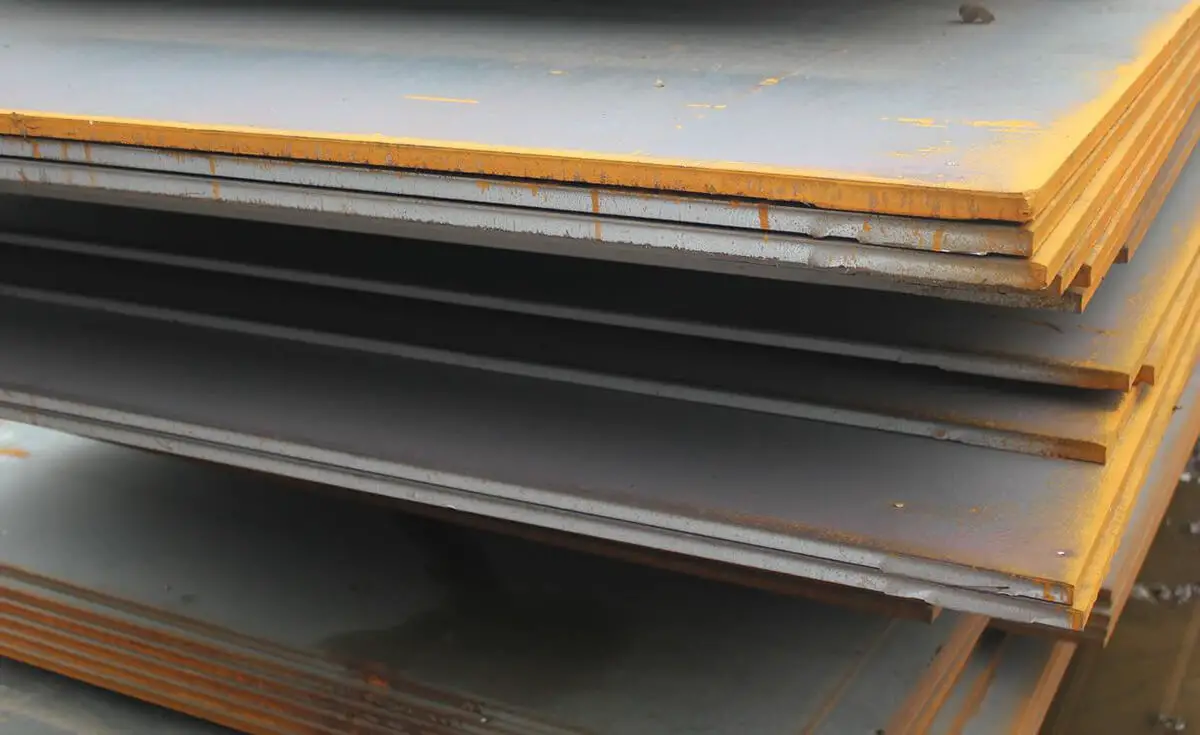
Shipbuilding steel is a specialized grade of steel engineered for the construction of seagoing vessels and large riverine craft. The primary requirement for this steel is excellent weldability, as the hull structure is predominantly fabricated through welding processes.
Beyond weldability, shipbuilding steel must possess a combination of critical properties:
Historically, low-carbon steel was the material of choice for shipbuilding. However, the industry has evolved to predominantly use advanced low-alloy steels. Contemporary shipbuilding steel grades include:
These grades are often referred to by their manganese content, such as:
These advanced steels offer:
Modern shipbuilding steels enable the construction of vessels exceeding 400,000 deadweight tonnage (DWT), such as ultra-large crude carriers (ULCCs) and container ships. The ongoing development of high-strength, low-alloy (HSLA) steels continues to push the boundaries of naval architecture and marine engineering.
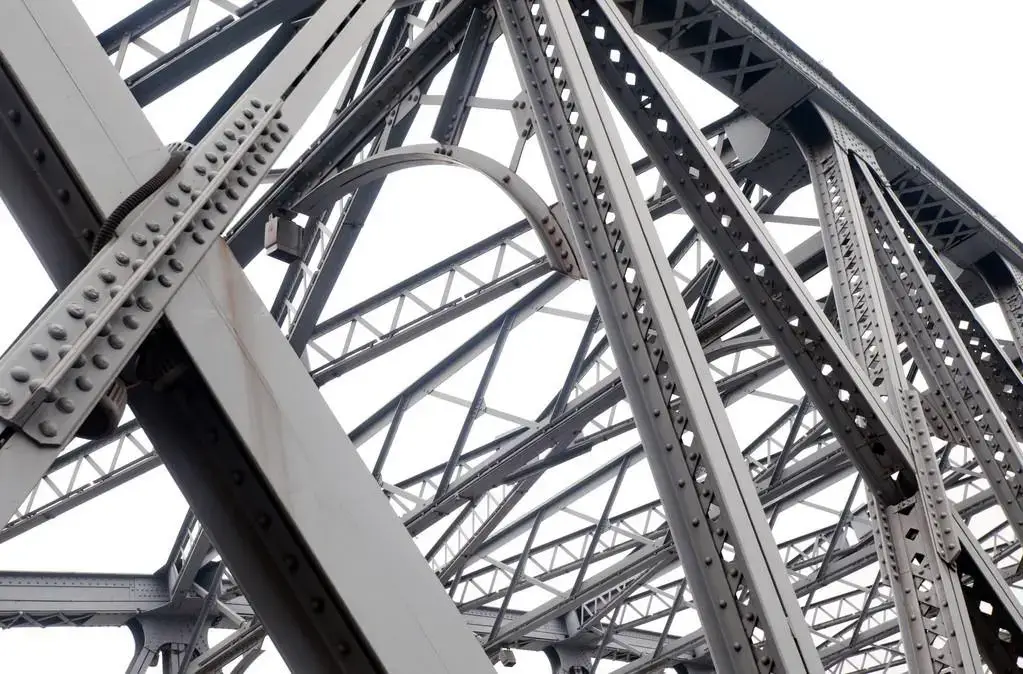
Railway and highway bridges are subjected to dynamic loads from vehicular traffic, necessitating the use of high-performance steel that can withstand these demanding conditions. Bridge steel must possess a combination of superior mechanical properties, including high strength, excellent toughness, and exceptional fatigue resistance. Additionally, stringent surface quality requirements are essential to ensure long-term structural integrity and corrosion resistance.
Traditionally, fully-killed basic open hearth steel has been widely used in bridge construction due to its reliable performance and cost-effectiveness. However, modern bridge design increasingly utilizes advanced low-alloy steels to meet more stringent engineering requirements. Two notable examples are:
These low-alloy steels have demonstrated superior performance in bridge applications, offering improved strength-to-weight ratios, better fatigue resistance, and enhanced durability in various environmental conditions. The selection of specific steel grades depends on factors such as bridge design, load requirements, environmental exposure, and life-cycle cost considerations.
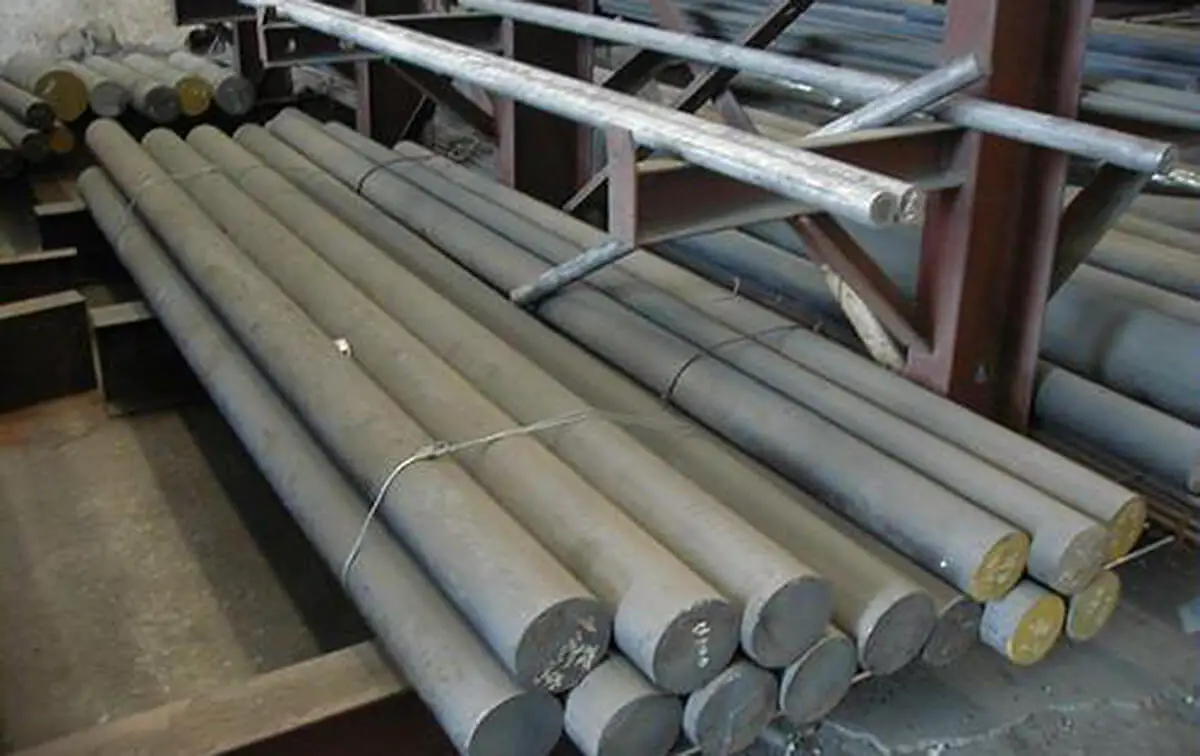
Boiler steel encompasses a specialized category of materials engineered for critical components in high-temperature and high-pressure environments, such as superheaters, main steam pipes, and heating surfaces within boiler fire chambers. The stringent performance requirements for boiler steel include excellent weldability, superior high-temperature strength, resistance to alkali corrosion, and exceptional oxidation resistance.
Commonly utilized boiler steels are primarily low-carbon killed steels produced in basic oxygen furnaces (BOF) or electric arc furnaces (EAF). These steels typically feature a carbon content ranging from 0.16% to 0.26%, carefully controlled to balance strength and formability. The killing process, usually performed with silicon or aluminum, ensures a fine-grained structure and improved mechanical properties.
For high-pressure boilers operating under extreme conditions, more advanced materials are essential. Pearlitic heat-resistant steels, such as P91 (9Cr-1Mo-V-Nb) or P22 (2.25Cr-1Mo), offer enhanced creep resistance and thermal stability. Austenitic heat-resistant steels, like 304H or 347H stainless steels, provide superior corrosion resistance and maintain strength at elevated temperatures.
In addition to these specialized alloys, certain low-alloy steels find application in boiler construction, particularly in less severe environments or supporting structures. These include:
The selection of appropriate boiler steel depends on factors such as operating temperature, pressure, corrosive environment, and design life. Modern boiler design often incorporates a combination of these materials, strategically placed to optimize performance, longevity, and cost-effectiveness in different zones of the boiler system.
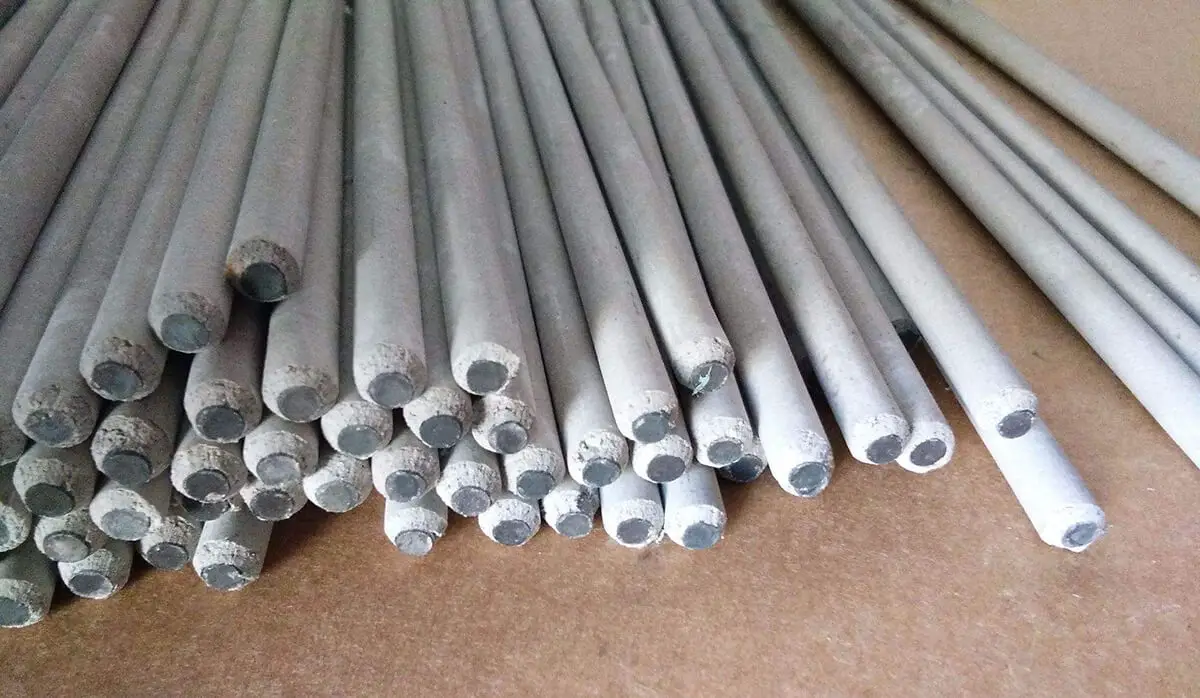
This specialized steel is engineered for manufacturing welding consumables, primarily wires for electric arc welding and gas welding electrodes. The chemical composition of welding rod steel is tailored to match the specific requirements of the base materials being joined, ensuring optimal weld integrity and performance.
Welding rod steels are generally classified into three main categories:
The metallurgical purity of welding rod steels is critical, with stringent controls on impurity levels. Notably, the maximum allowable sulfur and phosphorus content is limited to 0.03% each, which is significantly lower than the tolerances for standard structural steels. This high level of purity helps minimize the risk of weld defects such as hot cracking and porosity.
Unlike structural steels, welding rod steels are not typically evaluated based on mechanical properties such as yield strength or elongation. Instead, the primary focus is on precise control of the chemical composition, which directly influences the welding characteristics, including arc stability, deposition rate, and weld metal properties. Rigorous spectrographic analysis and other advanced analytical techniques are employed to ensure strict adherence to compositional specifications.
The development of welding rod steels continues to evolve, with ongoing research into advanced alloy systems that offer improved weldability, reduced fume generation, and enhanced performance in challenging welding environments.
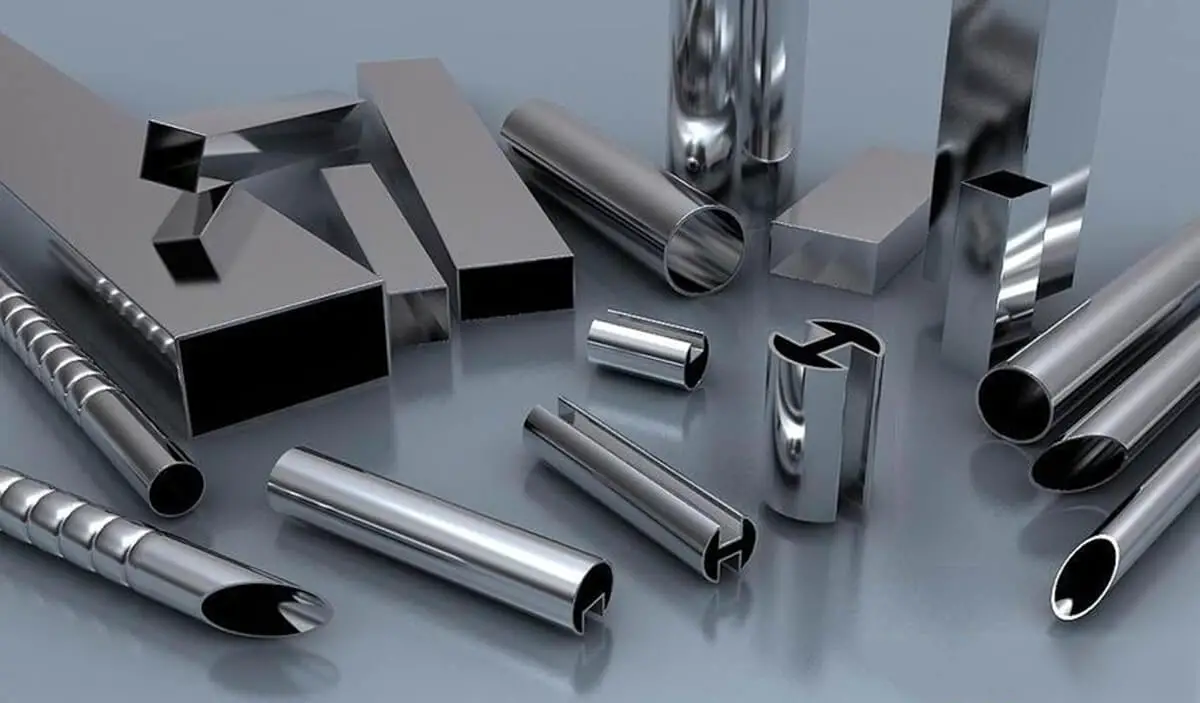
Stainless steel, encompassing both stainless and acid-resistant variants, is a family of corrosion-resistant alloys. While stainless steel primarily resists atmospheric corrosion, acid-resistant steel specifically withstands chemical medium corrosion, particularly acidic environments. This distinction, however, is often blurred in common usage, with “stainless steel” frequently used as an umbrella term for both types.
The defining characteristic of stainless steel is its chromium content. Generally, an alloy with a chromium content of 12% or higher is classified as stainless steel. This chromium forms a thin, stable, chromium-rich oxide film on the steel’s surface, providing its signature corrosion resistance.
Based on microstructure and heat treatment response, stainless steels are categorized into five main types:
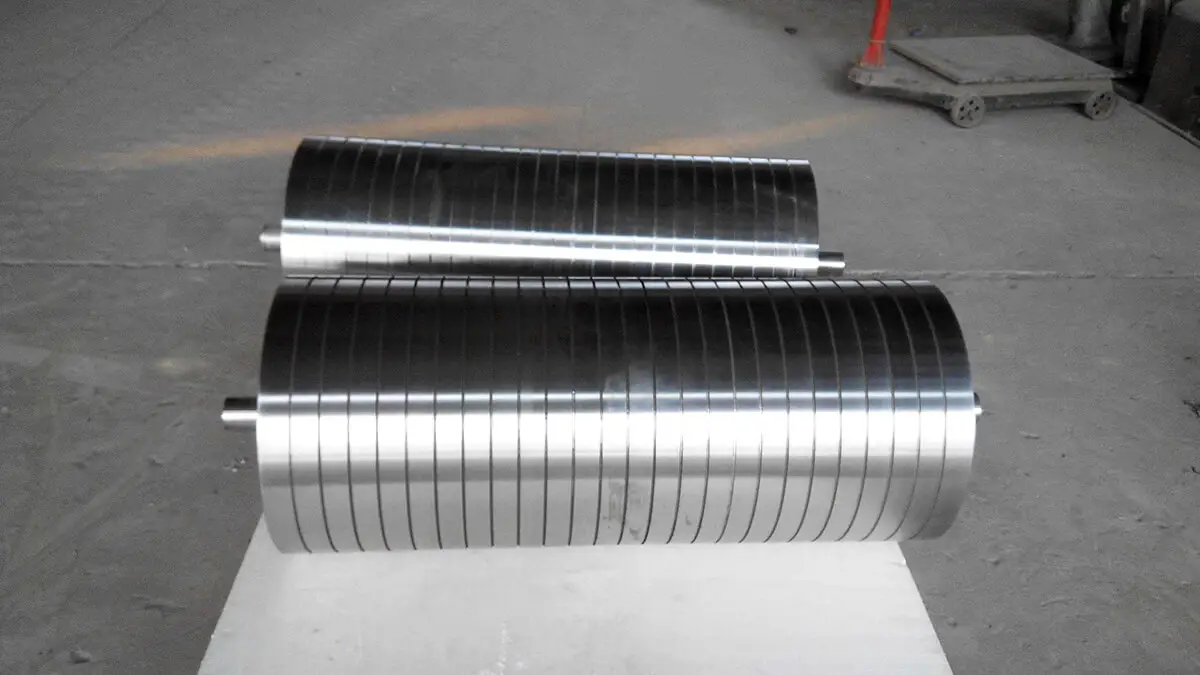
Heat-resistant steel is a specialized alloy designed to maintain its mechanical properties and structural integrity under prolonged exposure to elevated temperatures. It exhibits excellent oxidation resistance, superior high-temperature strength, and remarkable thermal stability in extreme operating conditions.
Heat-resistant steel can be categorized into two main types:
The key attributes of heat-resistant steel include:
Heat-resistant steel finds extensive applications in industries where components are subjected to prolonged high-temperature exposure, such as:
The selection of specific heat-resistant steel grades depends on factors like maximum operating temperature, stress levels, environmental conditions, and service life requirements. Common alloying elements used to enhance high-temperature properties include chromium, nickel, molybdenum, and various combinations of refractory metals.
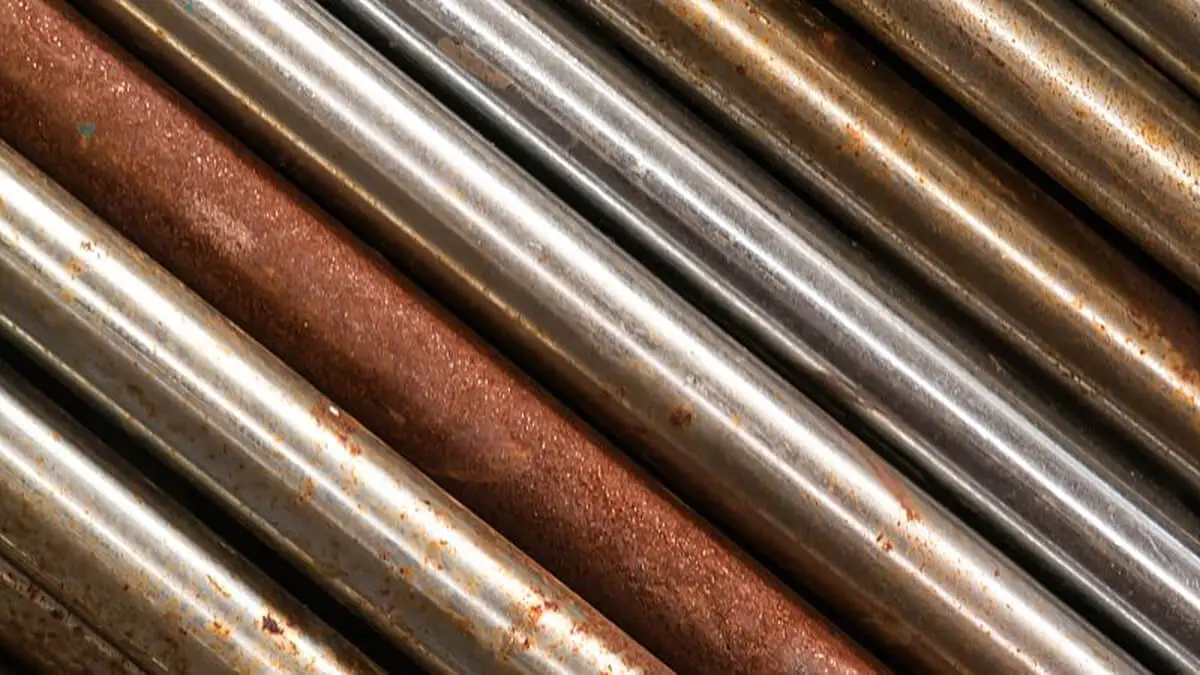
Superalloys are advanced metallic materials engineered to maintain exceptional mechanical strength, resistance to thermal creep, fatigue resistance, and chemical stability under extreme temperature conditions, typically exceeding 600°C (1112°F). These high-performance alloys are crucial for components in demanding thermal and mechanical environments.
Characterized by their complex compositions, superalloys generally fall into three main categories based on their primary constituent:
Key properties that distinguish superalloys include:
Applications of superalloys span various high-tech industries, including:
The development and optimization of superalloys continue to push the boundaries of material science, enabling advancements in energy efficiency, performance, and durability in extreme operating conditions.
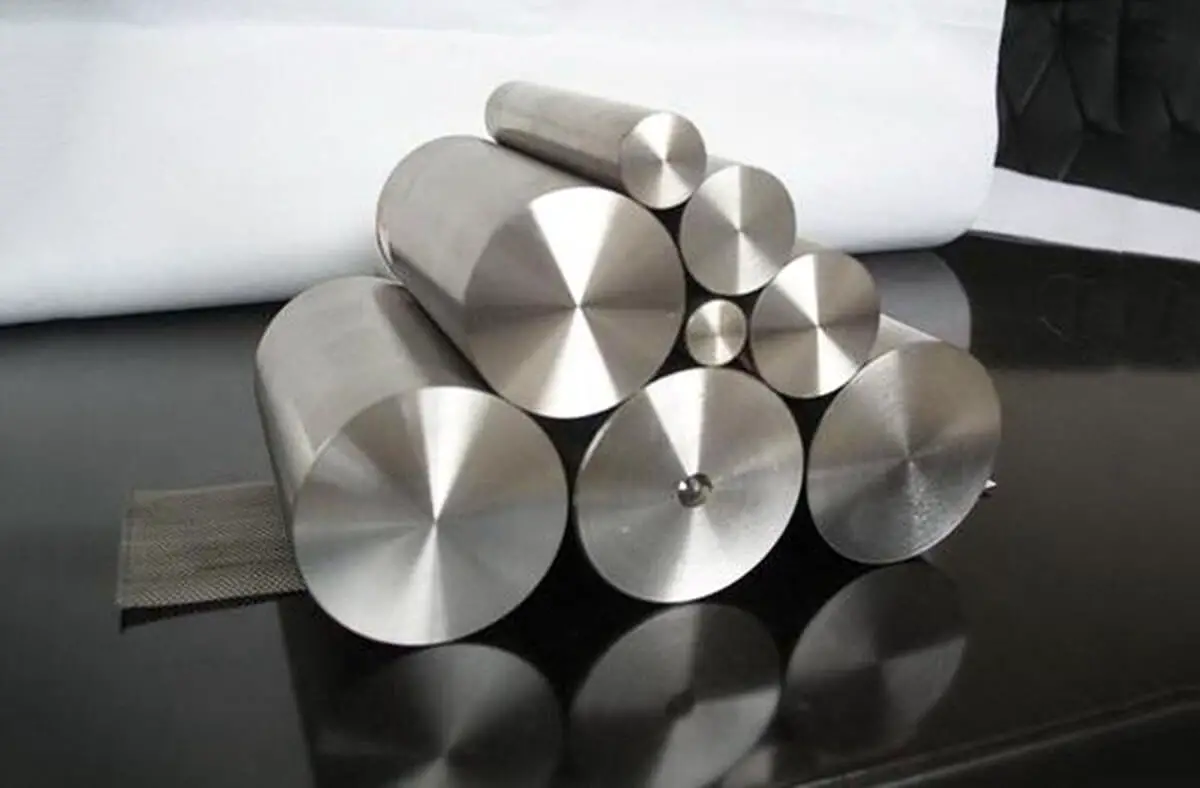
Precision alloys are specialized metallic materials engineered to exhibit specific and tightly controlled physical properties. These alloys play a crucial role in various high-tech industries, including electrical and electronic engineering, precision instrumentation, and advanced automation systems.
Based on their distinctive physical characteristics and applications, precision alloys can be classified into seven primary categories:
The majority of precision alloys are iron-based (ferrous), leveraging the versatility and cost-effectiveness of iron as a base metal. However, a select number of precision alloys are non-ferrous, typically based on nickel, copper, or other specialty metals to achieve specific property combinations not attainable with ferrous alloys.
In the context of precision alloys, strict control of composition is paramount. Key alloying elements are often specified to precise mass fractions, where:
These compositional controls, often specified to parts per million, are critical in achieving the desired physical properties and ensuring consistent performance in high-precision applications.
Steel is an iron-carbon alloy that has a carbon content ranging from 0.04% to 2.3%. To ensure its toughness and plasticity, the carbon content of steel is typically no more than 1.7%.
The main components of steel are iron and carbon, along with other elements such as silicon, manganese, sulfur, and phosphorus.
The classification of steel is diverse, and the main methods include:
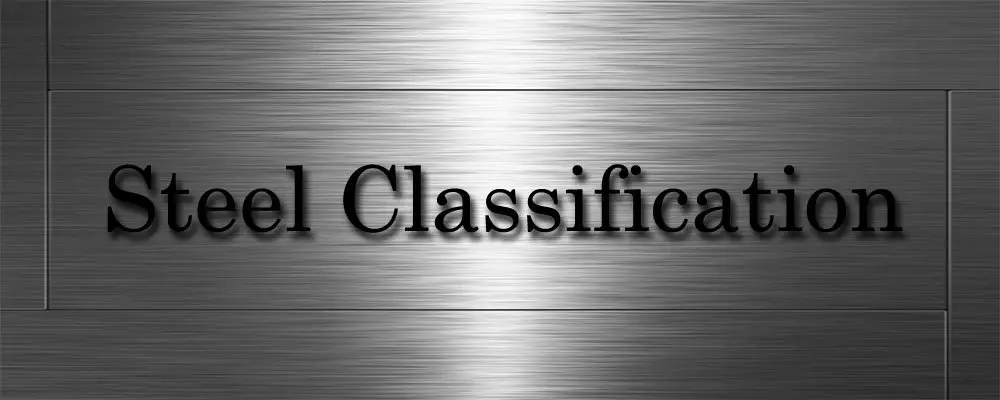
Classification by quality.
Classification by chemical composition.
(1) Carbon steel
(2) Alloy steel
Classification by forming method.
Classification by metallographic structure.
(1) Annealed
(2) Normalized
(3) Without phase change or partial phase change.
Classification by use.
(1) Construction and engineering steel
(2) Structural steel
a. Mechanical manufacturing steel
b. Spring steel
c. Bearing steel
(3) Tool steel
(4) Special performance steel
(5) Steel for dedicated use
Such as steel for bridge, ship, boiler, pressure vessel, agricultural machinery, etc.
Comprehensive classification
(1) Ordinary steel
a. Carbon structural steel.
b. Low alloy structural steel.
c. General structural steel for a specific purpose.
(2) Quality steel (including high-grade steel)
a. Structural steel
b. Tool steel
c. Special performance steel
Classification by smelting method.
(1) Classification by the furnace types
a. Open-hearth steel
b. Converter steel
OR
c. Arc-furnace steel
(2) Classification by the degree of deoxidation and the teeming system.
Related reading: Type of metal


